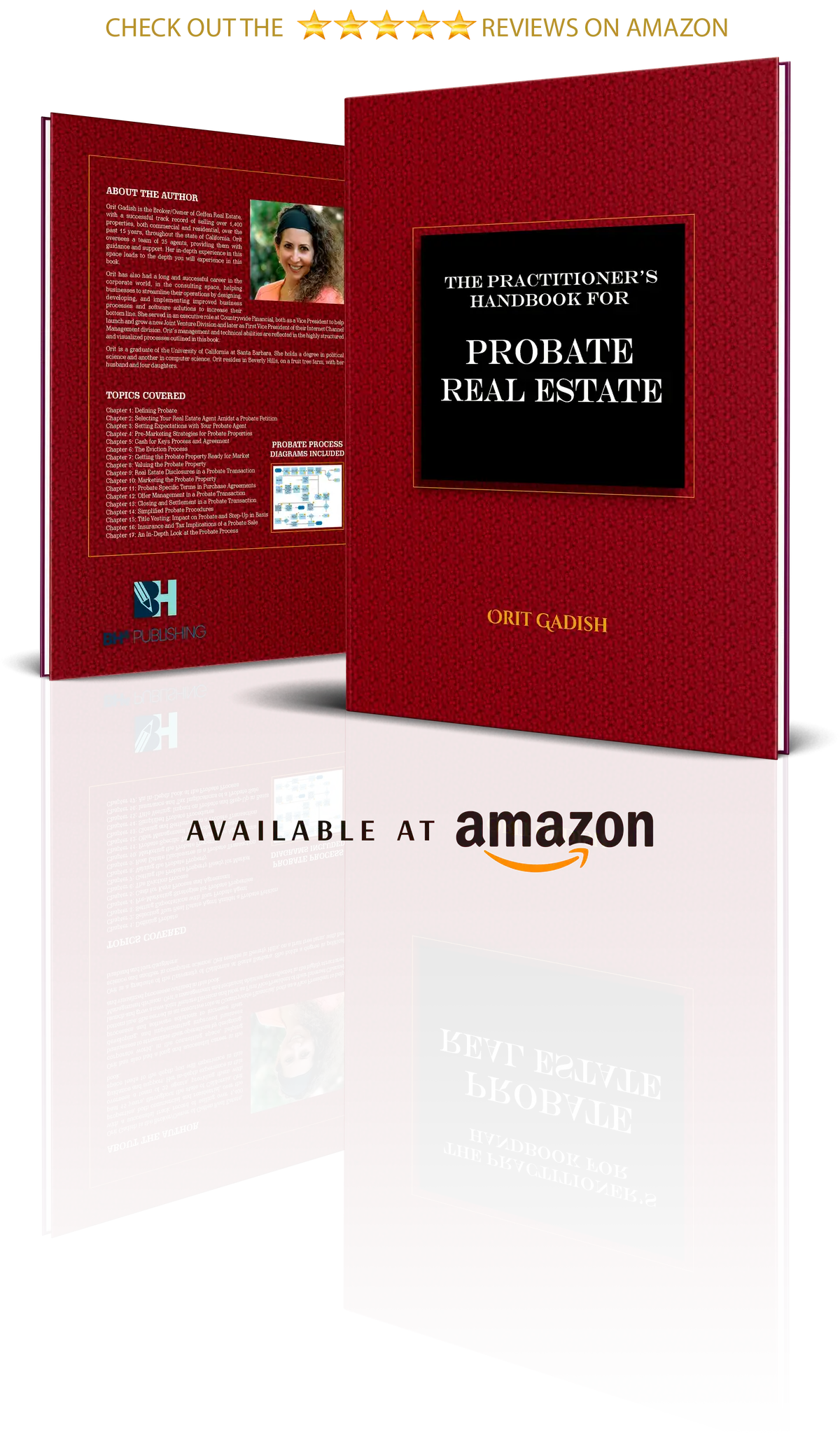The Probate Book
Orit launched “The Practitioner’s Handbook for Probate Real Estate” on March 15, 2021. The book has been purchased, read, and utilized by hundreds of attorneys, fiduciaries, and real estate professionals. Below are some of the reviews received about the book.

"The book The Practitioner's Handbook for Probate Real Estate is a must read for every attorney advising a trustee or executor/administrator considering the sale of real property during estate administration. I have seen no other resource which covers virtually all of the common discretionary considerations relating to commercial and residential sales, including decisions as to listing price, occupancy and staging, terms and conditions of sale, and the escrow process, discussing each of those issues in a practical and thoughtful manner."
"An excellent and informative exploration of the intricacies of dealing with real property in a California probate context. Orit has provided valuable information and insight from beginning to end for families facing the responsibility of selling real estate in probate. There is something for everyone involved in this process- beneficiary, broker, potential buyer, accountant, executor and attorneys, including the novice to the certified specialist. Kudos to the author for a job well - done."
"Probate Real Estate should not be a complex issue to tackle as a lawyer or a real estate broker. However, what Ms. Gadish has done in 179 pages is turn a dry and lifeless topic into an inspiration and education for those who do not live in probate courts throughout the State of California. From page 1, Ms. Gadish shows dealing with death, heartbreak, loss, and the law requires an “empathic mindset,” a term which appears throughout the book.
The Practitioner’s Handbook begins by giving the reader all of the basic terms of the trade so that no one gets lost as the book progresses through dealing with the real estate agents, addressing the probate court and staff, the valuation, marketing, closing of probate property and taxes. Ms. Gadish brings the process “down to earth” for the real estate brokers and family members who have to grasp and deal with these issues in a moment of stress.
Perhaps the strength of The Practitioner’s Handbook is that Ms. Gadish has included detailed flow charts showing in graphic form how the process is supposed to work and where the pitfalls lie. The most intriguing chapter is on “The Eviction Process.” As a practicing lawyer for 43 years with dozens of eviction trials under my belt, I visualized in laymen’s terms, why the eviction process can take weeks (if not months) is manipulated by the tenant and a good lawyer.
What comes out of a reading of The Practitioner’s Handbook is that a probate sale of real property has many facets. For example: getting the probate property ready for sale; valuing the property as is or as renovated by the seller or trustee; marketing a probate property; title and vesting issues after sale; employment of the probate court; and insurance and tax implications. Each is addressed by Ms. Gadish in simple English without the over-the-top hyperbola shown in probate texts drafted by lawyers.
For example, in discussing marketing a probate property Ms. Gadish states as follows: “ . . . the goal is to get as many eyes looking at the property being sold . . . . The more eyes that are looking at the property, the lower the risk of underselling. The greater the number of eyes leads to a competitive environment. It initiates offers, which are then driven to provide the maximum possible purchase price with a request for the highest and best offer.” (Page 91.)
I intend to keep my copy of The
Practitioner’s Handbook on my desk as an easy reference tool when faced
with a new probate engagement. Not only
for my benefit, but to share Ms. Gadish’s wisdom with my clients."
